The tricks that grocery stores use to MANIPULATE shoppers into spending more
- Replies 6
Does anyone else drop by the supermarket with only one thing in mind – only to end up with a trolley that’s filled to the brim? Don’t worry, we’re all guilty. But what if we told you that this behaviour isn’t a mere coincidence?
The truth is, almost everything about grocery stores is designed to manipulate you into spending way more than you need. From increasing the size of trolleys to cheekily placing produce at the front, retail giants spend a lot of money to ensure that their customers do too.
While you may already be subconsciously aware that these strategies come in full swing when you step inside the store, you’ll be surprised to know that they come before that.
In a video shared by The Recount, a woman divulges the 28 different gimmicks that supermarkets use to rack in as much money as they can from their customers.
Several of the psychological tricks mentioned are designed to put customers in a good mood, which boosts their willingness to spend more money. So make sure to keep an eye out for these signs the next time you’re due for a weekly shop:
1. Tailoring the appearance of products
When a shopper first steps into a grocery store, they are immediately bombarded with colourful flowers, freshly baked pastries, and produce. Anyone presented with these lovely arrays is bound to have their spirits lifted.
The scent of freshly baked bread will also make the customers hungrier, and we all know that it’s a slippery slope from there – as it can be tempting to grab anything that looks appetising from the shelves if you shop hungry!
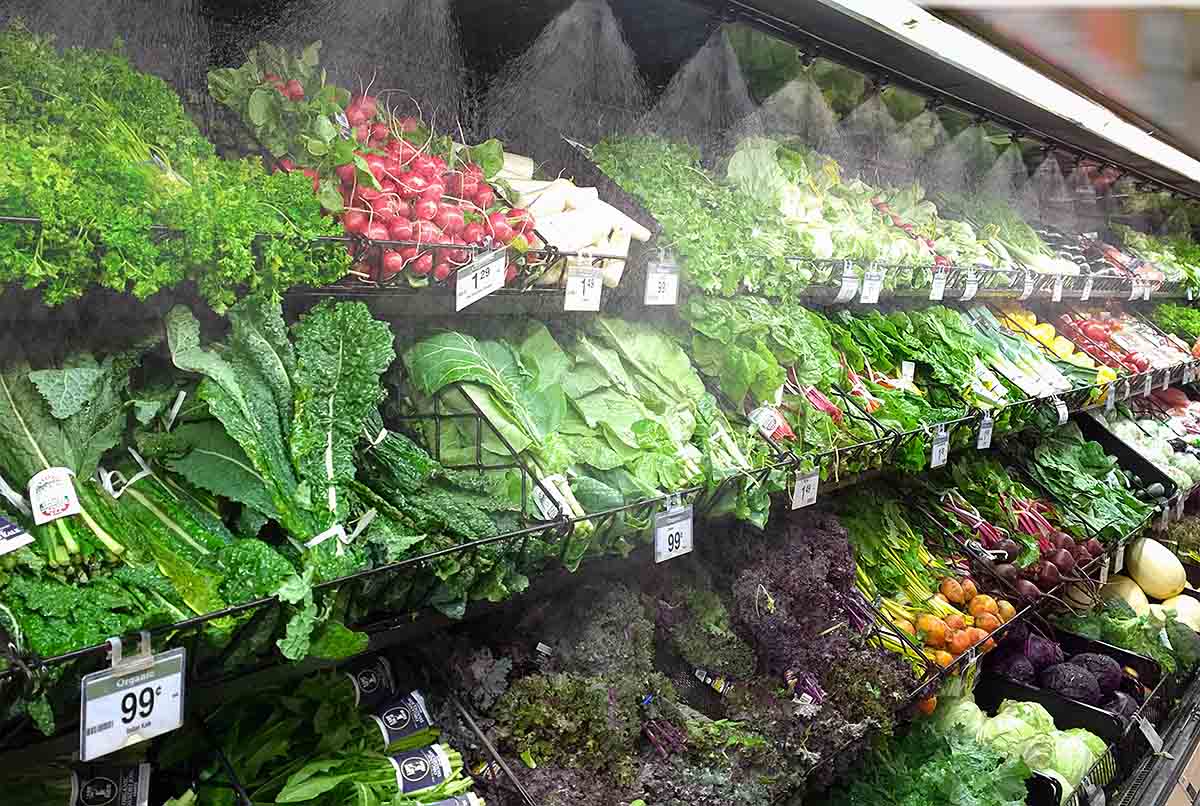
Stores try to make produce look fresher. Source: Produce Business
Furthermore, produce is usually sprayed with a mist, which actually causes them to rot faster, to make food items look more appealing. Stores know well that customers are more likely to buy these types of products if they look fresh.
Brands sold at the supermarkets even try to put children in a good mood! Upon closer inspection, you’ll notice that mascots on cereal boxes are looking down. This is to make eye contact with the little ones.
Grocery stores will then keep these cereal boxes in a place where they can ensure that the mascots will do their magic in hopes that the little kids will beg their parents to buy the product for them.
Lastly, supermarkets want to keep you as unaware of your expenses as possible, which explains why they shrink the dollar signs (and sometimes the prices too) on the price tags to get rid of the concept of money altogether.
2. Strategic product placements
By placing produce and healthy food at the front of the store, supermarkets are relying on customers to reward themselves for choosing healthier options at the start of their shop – until they are presented with less healthy and more expensive food items later.
Readily-prepared food is usually placed next to healthy food for the same reason, grocery stores are counting on you to reward yourself for choosing the ‘better’ option.
They also want you to feel good while checking out which is why they place so many 'reward' items like chocolate, magazines, and other candies by the register.

‘Rewards’ are placed by the register. Source: victorharbortimes
Brands will often pay extra to be stocked at eye level, as they will then be the first products that our eyes land on. This explains why big-name brands are usually found at eye level, while healthy and niche items are placed at the end and the best deals are placed at the bottom.
By placing brands you'll recognize and the most expensive brands at eye level, supermarkets are hoping that you'll grab the first thing you see and won’t notice the subtly hidden deals.
Products often bought together are also typically placed next to each other, such as peanut butter next to bread and kid’s toys next to diapers.
Source: @therecount
3. Bigger trolleys mean bigger spending!
How long do you usually spend shopping for groceries? If you take several hours, it’s not your fault. Groceries are designed to make extend your shop for as long as possible… And it starts with the sizes of shopping trolleys.
Big shopping carts encourage customers to buy more as it subtly breaks the illusion of your trolley being packed with items. The extra space will fool anyone into thinking that they didn’t load items into their trolley just yet.
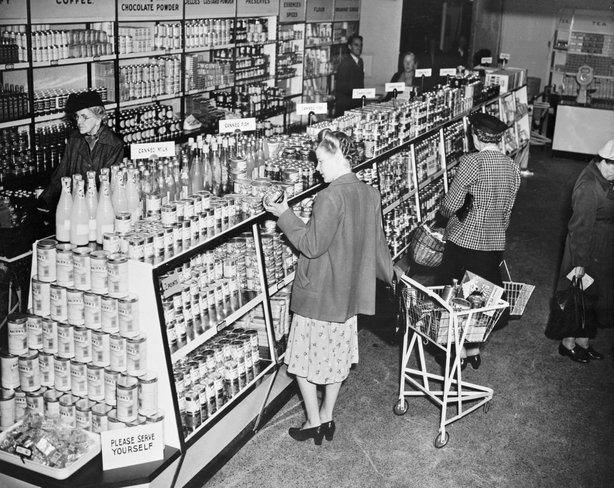
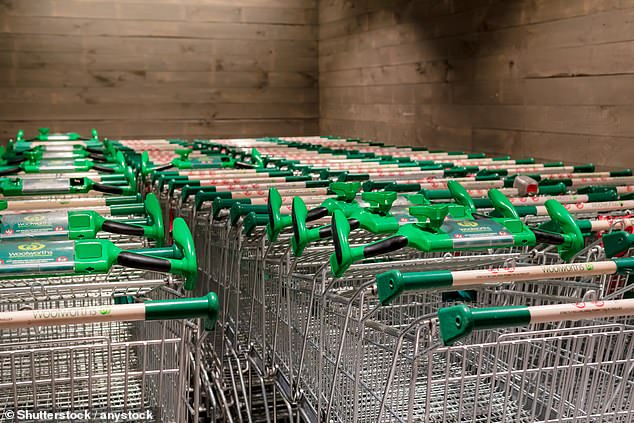
Trolleys then VS now. Source: RTE, ReadSector
Shopping carts in supermarkets have tripled in size since the 70s because stores know that their customers will continue to grab more products no matter how big they get.
This scheme works well as groceries offer customers countless choices. Whether it's 50 different types of pasta sauce or 100 varieties of snacks, you end up spending more time in the store making decisions.
Seasonal items are always randomly placed around the store because it acts as a ‘mental speed bump’. It encourages shoppers to take a moment and make a choice.
4. The layout to ‘trap’ shoppers
Like how casinos allegedly trick customers into spending hours on end playing, most grocery stores use the same gimmicks, making them incredibly easy to enter and almost impossible to leave.
Customers are instructed to go in one way and leave another, meaning that you'll have to scan every aisle–which increases the odds of buying something–before reaching the exit.
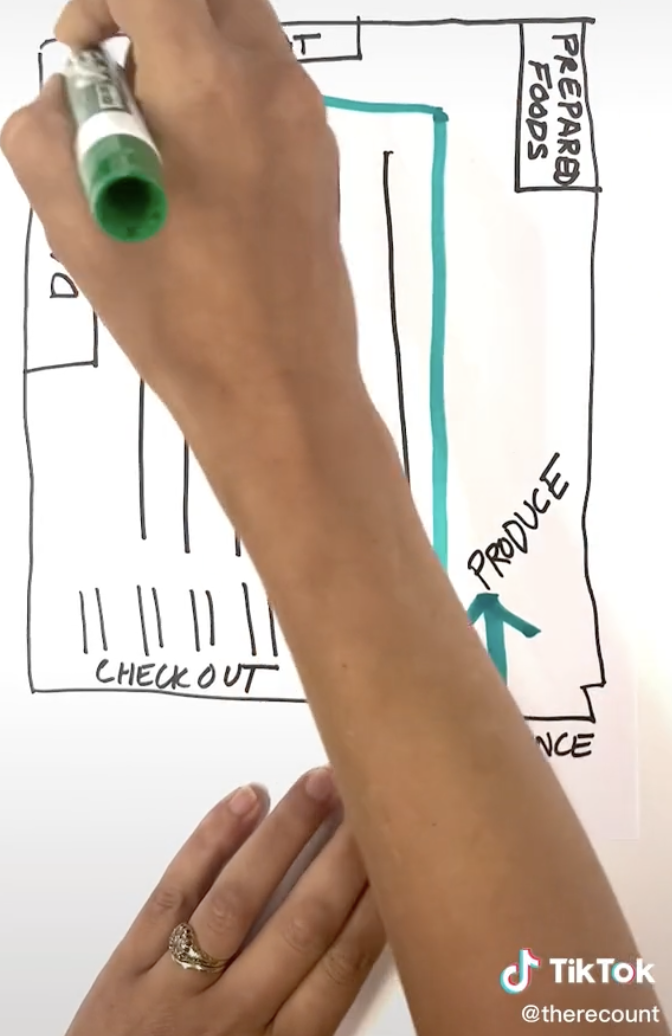
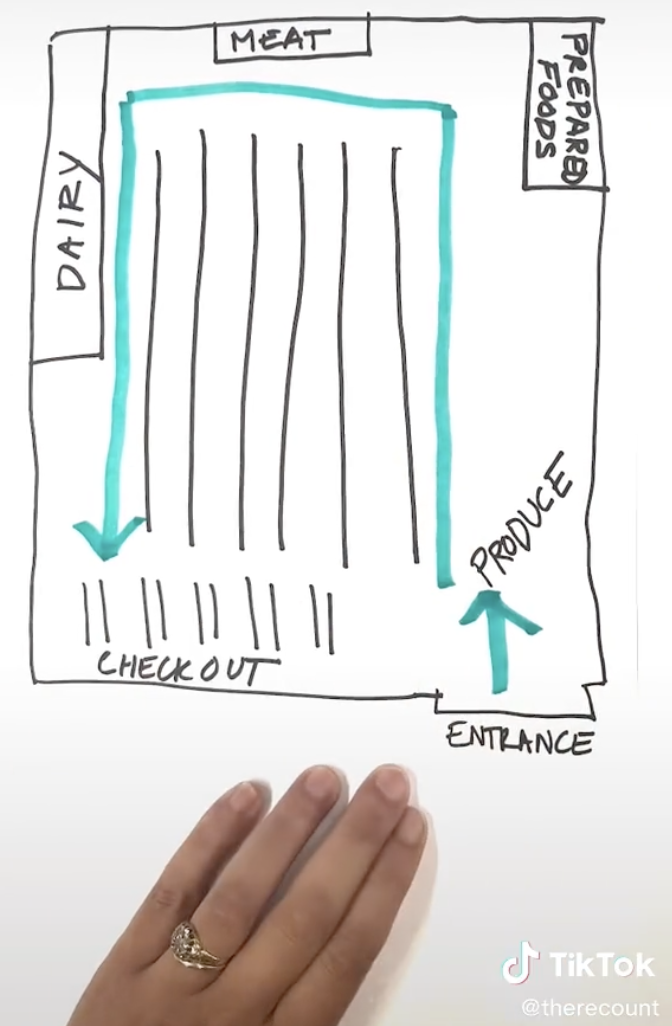
The counter-clockwise layout. Source: @therecount
It not only inevitably forces shoppers to spend extra time in the store, but they are also tempted to spend more money on items they don’t need.
One trick supermarkets use is placing the items counter-clockwise. This is because shoppers spend more money if they move in the same direction they drive.
5. Spacing out essentials
The next time you shop, you might notice that meat will be on one side of the store, the vegetables, and bread on another, and of course, the dairy aisle is at the very end.
Stores ensure that the essentials are separated to trick shoppers into passing by all the other areas and potentially add more items to their trolleys.
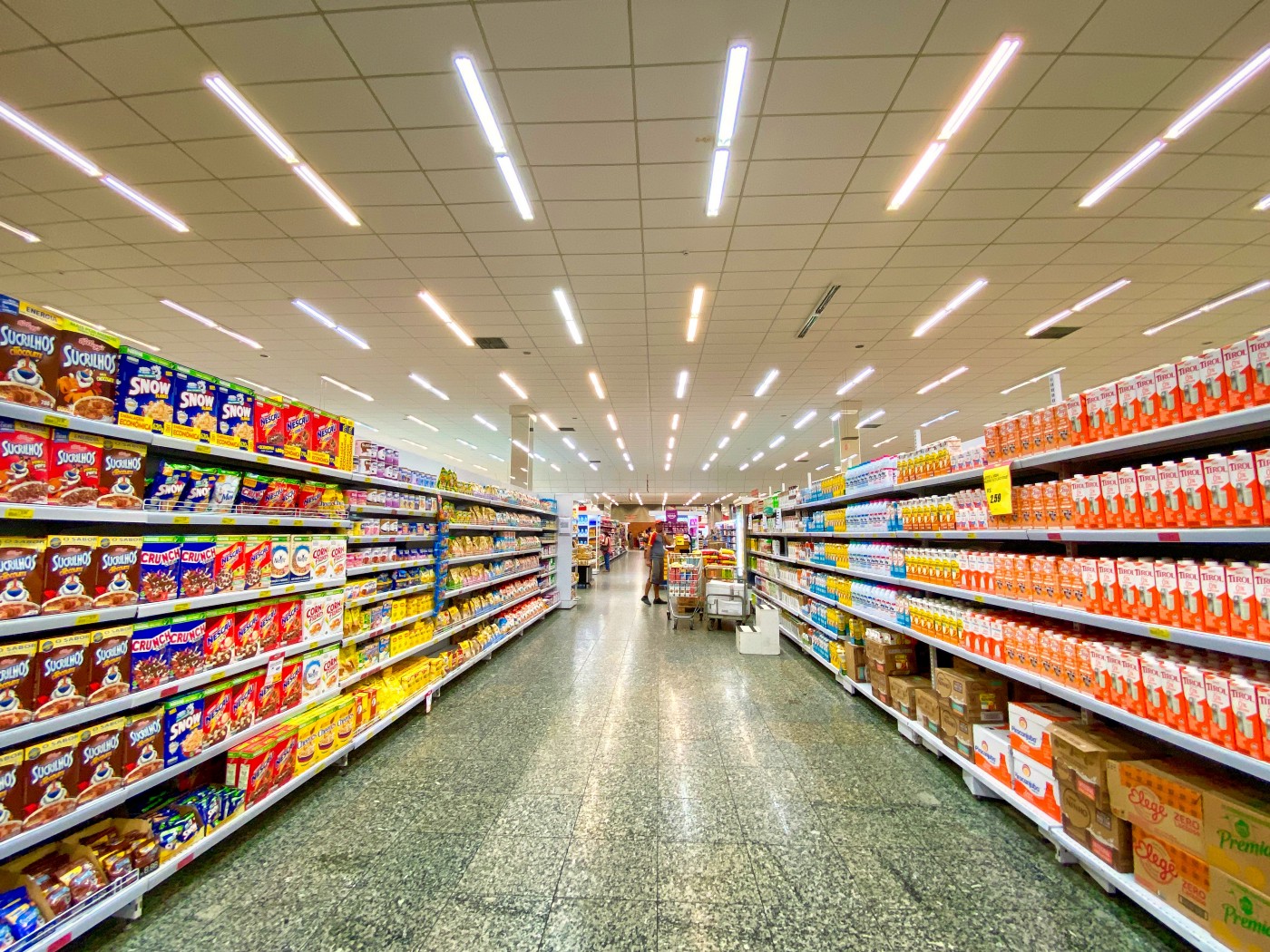
You must see everything before you leave! Source: Medium
This is the same reason the aisles in grocery stores seem exceptionally long. Supermarkets purposefully create extremely long aisles to keep customers from leaving conveniently.
Now that you know how grocery stores subtly manipulate customers, you can practice sticking to the items you actually need to buy during your next shop! Have you ever noticed one (or several) of these tricks in your local store? Let us know in the comments!
Watch The Recount’s follow-up TikTok video below:
Source: @therecount
The truth is, almost everything about grocery stores is designed to manipulate you into spending way more than you need. From increasing the size of trolleys to cheekily placing produce at the front, retail giants spend a lot of money to ensure that their customers do too.
While you may already be subconsciously aware that these strategies come in full swing when you step inside the store, you’ll be surprised to know that they come before that.
In a video shared by The Recount, a woman divulges the 28 different gimmicks that supermarkets use to rack in as much money as they can from their customers.
Several of the psychological tricks mentioned are designed to put customers in a good mood, which boosts their willingness to spend more money. So make sure to keep an eye out for these signs the next time you’re due for a weekly shop:
1. Tailoring the appearance of products
When a shopper first steps into a grocery store, they are immediately bombarded with colourful flowers, freshly baked pastries, and produce. Anyone presented with these lovely arrays is bound to have their spirits lifted.
The scent of freshly baked bread will also make the customers hungrier, and we all know that it’s a slippery slope from there – as it can be tempting to grab anything that looks appetising from the shelves if you shop hungry!
Stores try to make produce look fresher. Source: Produce Business
Furthermore, produce is usually sprayed with a mist, which actually causes them to rot faster, to make food items look more appealing. Stores know well that customers are more likely to buy these types of products if they look fresh.
Brands sold at the supermarkets even try to put children in a good mood! Upon closer inspection, you’ll notice that mascots on cereal boxes are looking down. This is to make eye contact with the little ones.
Grocery stores will then keep these cereal boxes in a place where they can ensure that the mascots will do their magic in hopes that the little kids will beg their parents to buy the product for them.
Lastly, supermarkets want to keep you as unaware of your expenses as possible, which explains why they shrink the dollar signs (and sometimes the prices too) on the price tags to get rid of the concept of money altogether.
2. Strategic product placements
By placing produce and healthy food at the front of the store, supermarkets are relying on customers to reward themselves for choosing healthier options at the start of their shop – until they are presented with less healthy and more expensive food items later.
Readily-prepared food is usually placed next to healthy food for the same reason, grocery stores are counting on you to reward yourself for choosing the ‘better’ option.
They also want you to feel good while checking out which is why they place so many 'reward' items like chocolate, magazines, and other candies by the register.
‘Rewards’ are placed by the register. Source: victorharbortimes
Brands will often pay extra to be stocked at eye level, as they will then be the first products that our eyes land on. This explains why big-name brands are usually found at eye level, while healthy and niche items are placed at the end and the best deals are placed at the bottom.
By placing brands you'll recognize and the most expensive brands at eye level, supermarkets are hoping that you'll grab the first thing you see and won’t notice the subtly hidden deals.
Products often bought together are also typically placed next to each other, such as peanut butter next to bread and kid’s toys next to diapers.
Source: @therecount
3. Bigger trolleys mean bigger spending!
How long do you usually spend shopping for groceries? If you take several hours, it’s not your fault. Groceries are designed to make extend your shop for as long as possible… And it starts with the sizes of shopping trolleys.
Big shopping carts encourage customers to buy more as it subtly breaks the illusion of your trolley being packed with items. The extra space will fool anyone into thinking that they didn’t load items into their trolley just yet.
Trolleys then VS now. Source: RTE, ReadSector
Shopping carts in supermarkets have tripled in size since the 70s because stores know that their customers will continue to grab more products no matter how big they get.
This scheme works well as groceries offer customers countless choices. Whether it's 50 different types of pasta sauce or 100 varieties of snacks, you end up spending more time in the store making decisions.
Seasonal items are always randomly placed around the store because it acts as a ‘mental speed bump’. It encourages shoppers to take a moment and make a choice.
4. The layout to ‘trap’ shoppers
Like how casinos allegedly trick customers into spending hours on end playing, most grocery stores use the same gimmicks, making them incredibly easy to enter and almost impossible to leave.
Customers are instructed to go in one way and leave another, meaning that you'll have to scan every aisle–which increases the odds of buying something–before reaching the exit.
The counter-clockwise layout. Source: @therecount
It not only inevitably forces shoppers to spend extra time in the store, but they are also tempted to spend more money on items they don’t need.
One trick supermarkets use is placing the items counter-clockwise. This is because shoppers spend more money if they move in the same direction they drive.
5. Spacing out essentials
The next time you shop, you might notice that meat will be on one side of the store, the vegetables, and bread on another, and of course, the dairy aisle is at the very end.
Stores ensure that the essentials are separated to trick shoppers into passing by all the other areas and potentially add more items to their trolleys.
You must see everything before you leave! Source: Medium
This is the same reason the aisles in grocery stores seem exceptionally long. Supermarkets purposefully create extremely long aisles to keep customers from leaving conveniently.
Now that you know how grocery stores subtly manipulate customers, you can practice sticking to the items you actually need to buy during your next shop! Have you ever noticed one (or several) of these tricks in your local store? Let us know in the comments!
Watch The Recount’s follow-up TikTok video below:
Source: @therecount







